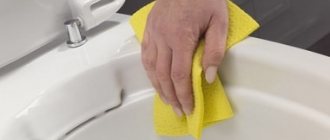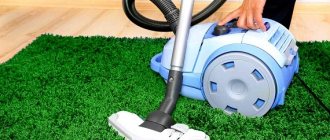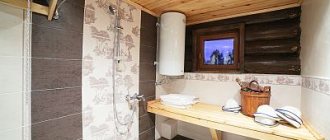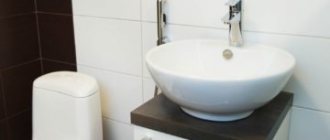Purifying the water in the pool will not have the desired effect if there is small debris, branches and leaves, and insects at the bottom. All foreign objects and particles must be removed.
For this purpose, various tools are used - bottom nets, nets, etc. However, the most effective and efficient device is considered to be a pool vacuum cleaner.
This is a special type of equipment that has nothing in common with conventional household appliances. Let's take a closer look at pool vacuum cleaners.
What is it, what is it for?
A pool vacuum cleaner is a device that quickly and effectively cleans the water, walls and bottom of the bowl.
With this device you can:
eliminate the need to frequently change water;- unload the pool filtration system;
- clean all elements of the bowl, including the bottom, walls and steps of the stairs;
- the work can be done independently, without the involvement of third parties;
- the possibility of damage to the pool bowl is excluded;
- processing is carried out quickly, at a convenient time.
The average pool cleaning time is 1-1.5 hours.
Neptun Z-200
Twin-engine cleaner
The robot will successfully clean the walls of a round, oval or rectangular pool. The path of the unit is zigzag; it can pass through a reservoir a large number of times, so it will capture all the debris on its way. The vacuum cleaner collects sand and large debris well. Due to its tight adherence to the walls of the pool during cleaning, the device effectively cleans the reservoir of silt and other dirt.
Types and names of water devices for the pool
There are several types of pool vacuum cleaners. What are their names:
- Swimming. Works with the top layer of water, filtering it and removing all floating debris. These devices are usually included in the basic configuration of large pools and are called skimmers.
- Bottom ones are manual or automatic devices designed to remove debris from the lower tier and bottom of the bowl.
- Submersible or underwater . These are different names for a general group of pool cleaning units. All devices operate submerged, and the bowl is processed in a submerged position. The only difference may be in the location of the pump and filter - they can be located outside the bowl, in their own housing.
A review of pool vacuum cleaners is presented in this article.
Basic criteria for choosing cleaning equipment
Before deciding to purchase a particular device, it is highly recommended that you familiarize yourself with the nuances that are worth paying attention to. It is important to understand that not every vacuum cleaner will cope with your task.
A responsible approach to choosing cleaning equipment will help you avoid wasting money. Sufficient knowledge will allow you to choose a model that will ideally clean the surface of the tank
Unit power. The parameter is the main selection criterion. It must match the size of the pool bowl. Give preference to those models that can work for about 5 hours without stopping.
Also, sufficient performance will save your time if you decide to choose a manual or semi-automatic vacuum cleaner.
Be sure to check with your consultant how well the device copes with cleaning the surface. Don’t forget to ask whether it is “friendly” with pools of complex configurations.
Cord length . It must be larger than the size of the bowl. Otherwise, you will have to use an extension cord, which is not recommended for safety reasons.
Types of filters and replacement frequency. Having learned about this, you can approximately calculate how much it will take to service the device.
Is it possible to replace it with something?
Using a pool vacuum is not always necessary.
If the pool is equipped with a powerful circulation system with high-quality multi-stage filters, there is no need for additional cleaning.
In addition, the functions of vacuum cleaners are performed by standard devices - skimmers , on the suction pipe of which a mesh container is installed. Water passes through them, and the debris remains in the container, which only needs to be shaken out periodically.
conclusions
- If you have a swimming pool, you definitely need a vacuum cleaner.
- You should buy it from trusted sellers.
- The choice of a vacuum cleaner for a pool depends on the size of your pond, the frequency of swimming, and your family budget.
- It is better to buy equipment from well-known global manufacturers - with a guarantee, documents, certification, quality certificate.
By cleaning and cleaning your family pool more often, you will insure your loved ones, children, and guests from unexpected disorders, illnesses, and colds. Swim to your health, may you always have warm and clean water!
Can it be used for cleaning?
Often, inexperienced users have questions about the possibility of replacing a special water vacuum cleaner with more familiar models.
Simple household electrical appliance
This is impossible . A household vacuum cleaner is designed to work with air; if water gets inside it will cause a short circuit.
Washing
It is also impossible to clean the pool bowl with a washing vacuum cleaner. Firstly, it has the same air suction function as a conventional dry cleaning vacuum cleaner. Secondly, the container for dirty water has a very small volume.
It is enough for delicate cleaning of carpets or upholstered furniture, but the capabilities of a washing vacuum cleaner are incompatible with the volume of swimming pools.
Zodiac Vortex PRO RV 5600
Powerful Performance (2016)
With the help of a programmable robot, the user can clean the pond completely. All you need to do is set one of seven possible cleaning modes. The all-wheel drive water vacuum cleaner is designed to clean large areas, making it suitable for cleaning personal and commercial pools. Steps, passages and ledges will not become an obstacle for the robot; it not only steps over them, but also cleans them of silt and dirt.
+ Pros of Zodiac Vortex PRO RV 5600
- The remote control allows you to adjust the operation of the device;
- equipped with a cyclonic suction system;
- good adhesion to any type of coating - does not fall from steep walls;
- there is a control unit on the body for selecting the shape of the reservoir and cleaning intensity;
- easily removed from water;
- You can set the operating mode by selecting a specific time or day.
— Cons of Zodiac Vortex PRO RV 5600
- works only from the network.
Where are they sold, at what cost?
These devices are specific, therefore, the easiest way is to order the desired model in one of the many online stores.
How much do the devices cost? The prices for them are different - you can buy an inexpensive manual cleaner for 2-3 thousand rubles, or buy a robot vacuum cleaner with an intelligent cleaning function for 195 thousand rubles.
The choice of a suitable model is made based on your needs, bowl size and your own financial capabilities.
Jebao EC-1
For cleaning ponds and outdoor pools
A vacuum cleaner with an electronic control on the handle is ideal for cleaning the walls of a swimming pool, garden fountains, and ponds. Its main purpose is to remove silt, leaves, plant seeds, and sand from the bottom of the pool. The unit can suck up large debris up to 2.5 cm in size, so it can be used to clean even in bodies of water along the edges of which there are trees that shed small branches into the water.
+ Pros of Jebao EC-1
- The vacuum cleaner handle is telescopic, extends up to 2 meters;
- there is a remote control on the handle of the unit;
- the device motor is protected from moisture;
- there is protection against starting “dry”;
- Can dive to a depth of 5 meters.
— Cons of Jebao EC-1
- requires constant human control.
Manufacturers
Manufacturers of pool vacuum cleaners are, as a rule, companies engaged in the manufacture of the bowls themselves and related equipment:
| Manufacturer | Manufacturer country | Construction type | Functions | Price range of models |
| Intex | USA | Manual | Connection to a skimmer or own circulation | Low, medium |
| BestWay | USA, China | Manual | Pool connection or independent operation | Low, medium |
| Zodiac | France | Robot vacuum cleaner, semi-automatic | Autonomous operation | Medium, High |
| Aquaviva | China | Robot vacuum cleaner | Autonomous operation | High |
| Kokido | Japan | Manual | Connection to skimmer | Short |
The list of manufacturers is much wider, but it makes no sense to list it in its entirety.
What are the operating principles?
A pool vacuum cleaner works on the principle of circular movement of water through a filtration system. Its work cycle consists of three stages:
- Water, along with foreign particles and debris, is absorbed by a special receiving element.
- The water passes to the filter, which stops the debris.
- Clean water returns to the pool bowl.
There are models with different operating principles. You can find out how pool vacuum cleaners work here.
Manual/mechanical
It is simple, but work with it is done entirely manually. This requires effort and time, so manual designs are used only on small bowls. As a rule, this is a set of brushes and nets designed to connect to the pool circulation system.
An example of such a device is the Kokido Classic 5-piece model. Included in the kit:
- wall cleaning brush 42 cm wide;
- triangular bottom brush;
- a net without a handle with a flat mesh;
- thermometer;
- drop tester for measuring pH levels and Cl concentration.
The kit is designed for connection to a pool skimmer. Price - 1900 rub. A review of handheld pool vacuum cleaners is presented in this article.
Electric
Electric models of vacuum cleaners are equipped with their own pumps for water circulation. They are used to clean swimming pools that do not have their own circulation system. As a rule, these are small bowls where the purchase and installation of additional equipment is unprofitable.
An example of such a vacuum cleaner is the Novum James.
- mechanism type - semi-automatic;
- productivity -9 m3/hour;
- maximum length of the pool - 14 m;
- cleaning area - bottom and walls.
The price of the model is 47 thousand rubles.
Rechargeable
Cordless models of vacuum cleaners do not need to be connected to a power supply. The source for them is batteries, which can be recharged from special devices. This is convenient if the pool bowl is located far from the house and it is difficult to connect power cables.
One of the battery models is Kokido Telsa 15:
- immersion depth - 0.25-2 m;
- battery type - Li-ion 2000mAh;
- Duration of continuous operation - up to 45 minutes;
- productivity - 1.9 m3/hour;
- filter capacity - 0.5 l.
The price of such a vacuum cleaner is 8 thousand rubles.
Semi-automatic
Semi-automatic machines are capable of independently adjusting the operating mode . They are economical because they do not come with their own pump. Instead, a pool skimmer is used - the hose is connected to it, and the system begins to circulate water with suction from the brush.
There are also vacuum models that independently produce suction using their own pump. These designs are used on bowls without external circulation piping.
An example of a semi-automatic machine is the Zodiac KONTIKI II model. Her indicators:
- productivity - 5 m3/hour;
- hose length - 8 m;
- universal type of cleaning;
- working area is the bottom of the pool.
The price of the model is 16,700 rubles.
Automatic (robot)
Automatic robotic vacuum cleaners perform cleaning based on their own program built into the device’s processor. You can control the work using the remote control, or through a mobile application. These are completely independent devices that only require periodic cleaning of the storage chamber where the collected waste is stored.
As an example, consider the DOLPHIN Maytronics S300i model. Her indicators:
- maximum bowl length - 12 m;
- continuous operation cycle duration - 1.5-2-2.5 hours;
- multi-level fine and coarse filtration;
- the possibility of stable navigation along the bottom, walls and other surfaces of the pool;
- power cable length - 18 m.
The price of the model is 160 thousand rubles.
Intex 28620
Battery-powered handheld vacuum cleaner
Do you prefer to keep everything under control and don’t want to entrust pool cleaning to robots? Then you will love a handheld water vacuum cleaner that runs on batteries. Its distinctive feature is mobility and maneuverability. The unit is not connected to the network; it can be used to eliminate contaminants in the most inaccessible places.
+ Pros of Intex 28620
- with the telescopic tube unfolded, the length of the vacuum cleaner is 2.3 meters;
- the device automatically turns off when there is no water;
- battery life – up to 50 minutes;
- collects sand well;
- lightweight (3.3 kg), aluminum tube;
- cheap, from 3200 rubles.
— Cons of Intex 28620
- It gets clogged if you frequently collect leaves.
Small and large models - what affects the size?
The difference between small and large vacuum cleaners is the cleaning speed. Small models are equipped with small brushes and develop low productivity. Large vacuum cleaners clean a larger area in one pass, passing a larger volume of water through them. This requires a more powerful pump and an effective filter.
An example of a small vacuum cleaner is the Intex 28001/58948 model:
- cleaning area - bottom;
- working cycle - 2 hours;
- hose length - 7.5 m;
- hose hole diameter - 38 mm;
- the price of the vacuum cleaner is 7900 rubles.
Parameters of the large vacuum cleaner Zodiac MX9:
- cleaning area - bottom, walls;
- working cycle - 2 sets for 2.5 hours;
- hose length - 12 m;
- movement speed - 8 m/min;
- price - 56,000 rub.
When choosing a model, size is considered first of all, since the ability to clean the entire bowl in one working cycle depends on it.
Kokido Telsa 10
The cheapest, but most effective in the series of manual cleaners is the Kokido Telsa 10. If a small pool needs to be cleared of floating debris, this is what you need! You don’t need to buy anything additional: a 500 ml filter bag, a 1.8-meter long rod - everything is included in the package.
The device is powered by a 2000mAh, 7.4V lithium-ion battery, which ensures continuous operation for forty minutes. After that, to replenish energy, it is connected to the built-in battery for 3-4 hours.
The design is on wheels, so it moves along the bottom without hindrance. Sticky debris is scraped off using a small, replaceable brush.
Options
- Power -100 W;
- Depth of work - 40 - 200 cm;
- Manufacturer – China;
- Surface to be cleaned – bottom:
- Filter capacity – 500 ml;
- Number of rods – 1 (4 sections);
- Pool area - 11 sq.m.;
- Suction nozzle size -15x55 mm.
We recommend:
- Intex 28001 for swimming pools: advantages, operation, price
- Neato XV Signature Pro: review, reasons for popularity, modes, price
- Automatic vacuum cleaners - advantages, price, features: TOP6
Equipment
The kit includes:
- device;
- filter;
- clip-on brush;
- cover with wheels;
- four-section rod 180 cm long;
- management.
Video: Kokido Telsa10™ – Rechargeable Handheld Pool Cleaner
How to do it yourself, what homemade options are there?
A pool vacuum cleaner is a fairly expensive item that is not needed every day. Therefore, many users make their own bowl cleaning devices.
As a rule, its own circulation system is used, to which a corrugated hose with a brush is connected .
An interesting option is a design that represents a piece of hose, at one end of which there is an adapter for connecting to a skimmer, and at the other - a homemade brush.
An ordinary plunger was used, in the connecting element of which a hole was made and a plastic tube was welded. The size of this brush allows you to effectively remove small debris, leaves and other foreign particles.
This article will tell you how to make a vacuum cleaner for a pool with your own hands, and this article will tell you how to make a device from a submersible pump.
How to connect?
Connecting the vacuum cleaner to the pool is done by attaching a hose to the skimmer (or connecting it to a break in the circulation line). It is important that the connection point is in front of the filter, otherwise all the dirt will return back into the pool.
Procedure:
- Install the appropriate size and type of attachment on the handle.
- Attach the handle to the corrugated hose.
- Immerse the hose in water until its entire cavity is filled with liquid.
- Attach the hose to the intake hole of the skimmer (if there are two of them, the hole of the second one must be temporarily closed).
After this, you can begin cleaning the bowl from foreign particles. How to connect a vacuum cleaner to the pool, read this article.
Kokido Telsa 30
Description
Cleans small and medium-sized ponds well. There is no need for wires, because Charged by built-in battery. Cleans surfaces using the side brushes of the floating head.
Options
- filter capacity 550 ml;
- depth min and max at which work is possible – 250 mm and 3000;
- Lithium-ion battery with a capacity of 2000 mAh.
How to use?
The use of a vacuum cleaner is largely determined by its design and range of functionality. Some models (robots) act completely independently, requiring virtually no human attention. However, work with manual and semi-automatic vacuum cleaners is carried out only by the user.
Procedure:
Clean any dirt from the sides of the bowl. This can be done using a regular brush that is not connected to a vacuum cleaner. The main task is to separate the layers from the bowl.- Wait until the mud settles to the bottom. This may take some time while the vacuum cleaner is prepared for use.
- Lower the brush to the bottom and begin collecting debris. You should not drive it chaotically along the bottom; you must follow a certain pattern of passages. This will help speed up the process and achieve maximum cleaning quality.
- At the end of the work, you need to disconnect the hose from the skimmer and, lifting it up, drain the water. Then clean the filter and put the vacuum cleaner away until next time.
In any case, you must carefully study the instructions and act according to their points. You can learn how to use a pool vacuum cleaner here.
Purpose
An underwater vacuum cleaner is a useful tool because dirt accumulates in the water. Moreover, this happens much faster than in the house or in the yard.
Dirt and debris not only settle to the bottom in an even layer, but also form an optimal environment for the development and spread of pathogenic fungi and bacteria. And this applies to both inflatable and stationary pools.
Such a layer is formed not only at the bottom, but also at the line between water and air (waterline). If heavier objects sink down, light substances remain on top. There is less dirt on the walls.
Cleaning a pool with a scraper is difficult and time-consuming. In addition, the method is not suitable for portable and inflatable options. It’s also not always possible to clean tiles this way, especially when it comes to gaps between parts.
With the help of vacuum cleaners for swimming pools, you can effectively clean not only the bottom, but also the walls and surface of the water. This device is easy to use. It will save money (including due to the fact that you won’t have to hire a team to clean the pool).
The next advantage is that the device is able to process even the most difficult to reach places (corners, steps, various protrusions and decorative parts).
Frequent breakdowns and repairs
It is best to take the vacuum cleaner to a specialized workshop for repairs. Qualified specialists work there who will do everything quickly and accurately. However, if you are using a manual model with a simple design, you can carry out the repairs yourself.
Typical breakdowns:
- failure of the connecting elements for the brush or for the skimmer hole;
- brush breakage;
- rupture or deformation of the corrugated hose;
- wear of filter cartridges, failure of mesh elements.
All these problems can be solved without much difficulty with your own hands. It is necessary to inspect, identify defective parts, disconnect them and replace them with new elements. Sometimes a damaged part can be restored, but its service life will in any case be noticeably reduced.
More complex models of vacuum cleaners require professional repairs , which can only be done by service center employees.










